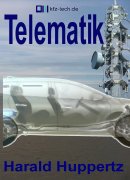
Bookstore
Exercises
Wheel change
Save Energy
History
Formulary

Ganz neu ...

Ganz neu ...
Great Britain 1
Great Britain 2
Great Britain 3
Great Britain 4
Great Britain 5
Great Britain 6
Great Britain 7
Jaguar
Land Rover
History Rover 1
History Rover 2
2014 Land Rover Discovery
2011 Range Rover Evoque
1994 Range Rover
1989 Land Rover Discovery
1970 Range Rover
Jaguar 1
Jaguar 2
Jaguar 3
Jaguar 4
Engines
2015 XE
2014 F-type Coupe
2013 XFR
2013 F-type
2009 XK-R
2009 XF
1999 S-type
1993 XJS
1992 XJ 220
1979 XJ Series 3
1975 XJ 4,2 Coupe
1975 XJ-S
1973 XJ Series 2
1968 E-type Roadster
1968 XJ Series 1
1966 XJ 13
1964 E type Cabrio
1964 Mark X
1963 Jaguar S
1961 E type Cabrio
1961 Jaguar E
1961 Rear Axle
1959 Jaguar Mk II
1957 XK 150
1954 d-type
1954 XK 140
1951 c-type
1948 XK 120
1948 Mark V
1945 SS Mk4
1946 SS Jaguar Saloon
1938 SS Jaguar 100
1936 SS Jaguar 100
|
 Jaguar XJ Jaguar XJ
|
|